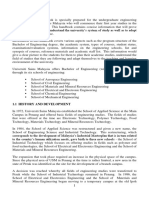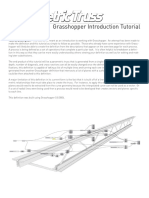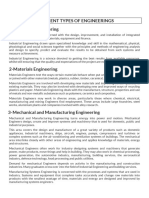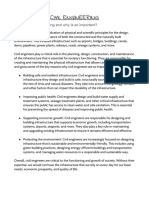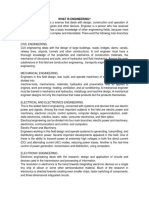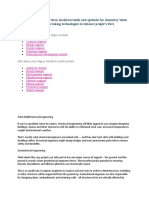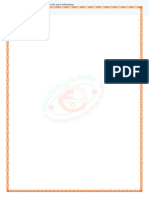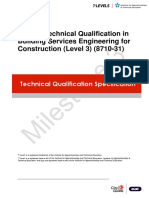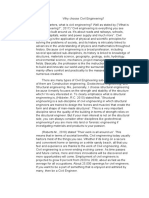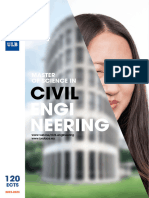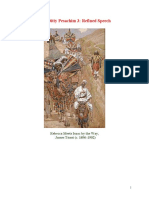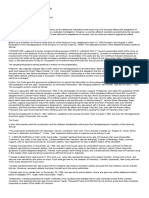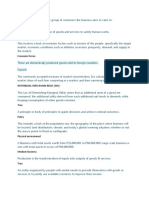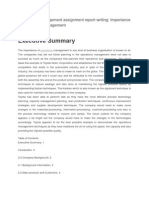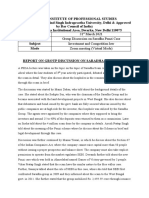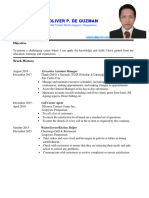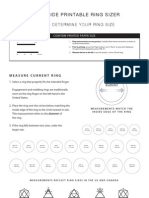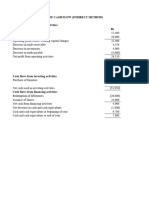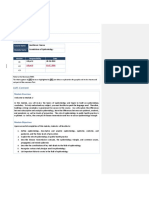information booklet master track
Building Engineering
2011-2012
�information booklet Building Engineering
This booklet is a publication by
the MSc Building Engineering
track of the faculty of Civil
Engineering of the Delft
University of Technology. It is
meant as a guiding document
and therefore no rights can
be claimed on grounds of this
document
Cover image: Opera House, Copenhagen Denmark
�Preface
This booklet is published by the MSc Building Engineering
track of the faculty of Civil Engineering of the Delft University
of Technology. The booklet is meant as a guiding document
for (future) Master students Building Engineering at this
faculty.
With this guiding document an overview is given of the
possibilities within the Master variant. At the same time it
helps the student to choose courses and make a planning for
the Masters phase.
Besides this information booklet it is advised to visit the
website of Building Engineering: www.be.citg.tudelft.nl
Besides an overview of the courses and MSc thesis projects
this website publishes adjustments in the curriculum.
August 2011
NB The official course and examination regulations are always decisive.
These can be found at Legal Position/Regulations/Course and Examination
Regulations/CEG/Implementation Regulations on www.studenten.tudelft.nl.
Delft University of Technology 2011-2012
World Expo 98, Lisbon Portugal
Contents
Introduction�5
Chapter 1: General information Building Engineering�
Chapter 2: General programme for the Building Engineering Track�
11
Chapter 3: Specialisations�
17
Chapter 4: Graduation at Building Engineering�
25
Chapter 5: Related institutions�
31
Chapter 6: Useful addresses and telephone numbers�
35
�Introduction
Buildings are an important part of human society. From the
moment that humans changed their lifestyle from nomadic
to settling, buildings have become a necessity; a necessity
that has been growing in complexity ever since.
Where the first human beings simply needed a roof over
their head and relied on farm animals and fire to keep
them warm, there the modern human requires light, space,
climate control.
Furthermore, modern man requires a greater variety of
buildings, churches to football temples, offices to train
stations, etc. Buildings with ever increasing complexity
and ever increasing scale.
This is where the Building Engineer comes into play. The
Building Engineer plays a vital role in making a building
work. The complexity of all the different functions that
a building fulfills needs to be analyzed and controlled.
With a broad background followed by a specialisation,
the Building Engineer can assume different roles such as
structural engineer, faade engineer, building manager,
building services engineer, etc.
This way the complexity of the project is brought back to
the essential human needs: comfort and protection.
Delft University of Technology 2011-2012
5
The main difference with the Master track Structural
Engineering lies in this integral focus on structures, where
Structural Engineering focuses more on materials and
mechanics.
This booklet is a guide for students interested or
participating in the Building Engineering Master variant.
Chapter 1 gives a short introduction into Building
Engineering backgrounds and an overview of future
possibilities.
Chapter 2 is a practical chapter with information on the
curriculum of the Building Engineering Master variant.
The different specialisations within the Building Engineering
track are discussed in Chapter 3, including curricular
demands.
The practicalities surrounding the Masters thesis, which
concludes the Masters education, are found in Chapter 4.
In Chapter 5 two important institutions related to the
Building Engineering track at this faculty are introduced:
the Structural Design Lab (SDL) and the U-Dispuut
students association.
Chapter 6 concludes with useful addresses and telephone
numbers.
Millennium Bridge, London UK
�6 Information booklet Building Engineering
Vodafone office, Lisbon Portugal
�Chapter 1: General information Building Engineering
1.1 The Dutch building industry
With 55 billion euros in 2007, approximately 10% of the
gross national product, the turnover of the building industry
is clearly an important part of the Dutch economy.
Yearly turnover of the Dutch building industry:
(source: Verwachtingen bouwproductie en werkgelegenheid 2008, EIB)
Housing 21
billion
Utility buildings 20
billion
Civil structures 14
billion
-------Total: 55
billion
Building Engineering students will usually work in the field
of utility buildings. The domain of (utility) buildings can be
subdivided into the following categories:
Relation with people:
Offices
Hospitals
Schools
Sports stadiums
Shopping centres
etc.
Delft University of Technology 2011-2012
Relation with infrastructure:
Stations
Parking garages
Airports
Seaports
Communication towers
etc.
Relation with processes:
Industrial buildings
Clean room facilities
Power plants
Waste processing plants
Aircraft hangars
etc.
�8 Information booklet Building Engineering
1.2 Roles
1.3 Working field
Building projects are becoming increasingly complex both
in functions as in technology and process. The result is
that an integral approach is desired more and more. The
role of the Building Engineer in this process is focused
on technology and process, while the architect is mostly
focused on function and aesthetics. However, to create a
successful building it is necessary to continuously use an
integral approach and consideration.
Many of the Building Engineering graduates will start
working in the construction industry. There are different
roles that can be assumed by building engineers in different
parts of the building process as well as in different types of
companies. After graduation both national and international
career opportunities are available. Possible working fields:
Building contractors
Real estate developers
Institutional investors
Architectural/ Engineering firms
Consultancies
-- Building Services firms
-- Faade consultancies
Construction firms of large companies and institutions
Engineering services government
Research institutes (e.g. TNO Construction)
Educational institutes (e.g. TU Delft)
�9
1.4 The Building Engineering Track:
preparation for the working field
important for you to be familiar with each others fields of
expertise. If for instance a buildings supporting structure
is visible then together with an architect a solution needs
The Master of Science programme of Civil Engineering to be found which is attractive in both structural and
comprises the following six tracks:
architectural terms.
Structural Engineering
Building Engineering
Hydraulic Engineering
Water Management
Transport and Planning
Geo-Engineering
Within the track Building Engineering the student can
choose the specialisations given in chapter 3.
The MSc track Building Engineering provides a broad
curriculum. This includes all important aspects throughout
the entire building cycle, from initial planning through the
phase of use and onwards to redevelopment and demolition.
The focus is on the technical and structural functions of
buildings. However, the principles of architectural design
are also examined. After all, in practice civil engineers
will often work together with architects. It is therefore
Delft University of Technology 2011-2012
In order to make a useful contribution to the design of
buildings, a building engineer must have knowledge that
includes the following fields:
Structural solutions
Structural and building services engineering
Materials
Building physics
Finishing techniques
Building organisation and management
Building costs
This knowledge is acquired in a two-year programme
which is designed to help you graduate as a highly expert
engineer with a practical perspective. Following graduation
your knowledge and experience will make you suited for a
wide range of professions.
�10 Information booklet Building Engineering
�Chapter 2: General programme for the Building Engineering Track
2.1 General programme Civil Engineering Master
The official documents on regulations for exams and
graduation give a general scheme applicable for all Master
tracks. This scheme is given in Figure 2.1. This is presented
in a convenient arrangement in Figure 2.2.
In the scheme it is visible that all tracks of the Civil
Engineering Master programme have one course in
common. This is the course on ethics (WM0312CT).
Then there is an obligatory part for all Building Engineering
specialisations, part b1. For Building Engineering is has
been tried to compose a mix between a decent common
basis with room for specialisation. Therefore 6 courses are
obligatory for all BE students. These courses can be found
in Figure 2.2.
11
Then there is an obligatory part dependent on which
specialisation is chosen (part b2). Within the Building
Engineering Master Track three different specialisations
can be followed:
Building Technology & Physics
Structural Design
Design and Construction Processes
The reason for using specialisations in the Building
Engineering track is to improve the transparency within
all possibilities to choose from. Furthermore it gives an
identity in relation with graduation and future possibilities
within the study programme which aids both students and
external professionals. The layout of the specialisations
can be found in Chapter 3.
N.B. The program overview can also be obtained from
www.studiegids.tudelft.nl
Delft University of Technology 2011-2012
Burj al Arab, Dubai UAE
�12 Information booklet Building Engineering
Article 3 The composition
1. The study programme track are compiled in the following way:
a. 4 credits: the subject Ethics (WM0312CT)
b. 56 credits: track-linked subjects belonging to the chosen track. The track-linked subjects may be subdivided into
those that are general track-linked subjects and those that belong to a specialisation as stipulated in Articles 5
to 10. Track-linked credits, exceeding 56 credits, will be considered as credits achieved for electives mentioned
under c.
c. 20 credits as follows*:
* 20 credits electives. The student has to choose 10 credits offered in conjunction with the degree course. For
the other credits the student may choose:
- all subjects offered in conjunction with the degree course,
- all subjects offered in conjunction with other Masters degree courses,
- the specialisation subjects included in the list keuzelijst specialisatievakken as intended in Article 4 of the
Implementation Regulations for the BSc. degree course in Civil Engineering at Delft University of Technology,
- interfacultary electives at Delft University of Technology with a WM-code to a maximum of 6 credits.
Before any other subjects can be studied the approval of the board of examiners is required.
OR
* two of the possibilities listed below:
- 10 credits: Traineeship (CT4040-09)
- 10 credits: Multidisciplinary Project (CT4061-09)
- 10 credits: electives. What is determined above for the other electives is similarly applicable.
- 10 credits: Additional Master Thesis Project (CT5050-09). The Additional Master Thesis Project may or may
not be related to the MSc Thesis Project mentioned under d but it may, in any case, be separately distinguished.
d. 40 credits: a track-linked Master Thesis Project (CT5060-09). The Master Thesis Project consists of a final
project, a thesis, a summary of the thesis and a final presentation.
Figure 2.1: Draft layout of the Civil Engineering Masters Programme 2010-2011, from the Implementation Regulations MSc. CE.
�13
credits
course [credits]
p1
a.
4 ECTS
Compulsary for all students
WM0312CT Ethics
Figure 2.2: The layout of the Building Engineering Masters Track
Delft University of Technology 2011-2012
p2
p3
p4
s
b1.
23 ECTS
Compulsary for all BE areas:
CIE4201 Architecture and Building Engineering [4]
CIE5981 Forms of Collaboration in Civil Engineering [4]
AR2AE035 Building Design and Engineering [12] consisting of:
D1 - Design [5]
D2 - Structural Design (=CT4230) [2]
D3 - Faade Design [2]
D4 - Climate Design [3]
CIE4215 Faade Design Plus [3]
b2.
31 ECTS
Specialisation linked courses, see Chapter 3
c.
22 ECTS
AR2RP111 High Rise [12]
Choose one out of three below:
c1.
CIE4040 Traineeship [10]
c2.
Additional electives [10]
c3.
CIE5050
additional graduation work [10]
d.
40 ECTS
MSc Thesis (specialisation linked)
period
s
s
s
Legend
recommended education period
education period
start education
�14 Information booklet Building Engineering
2.2 Traineeship (c1)
One of the optional subjects in the MSc programme is the
internship. The internship lasts for at least 8 weeks and is
awarded 10 ECTS as standard. The aim is that in the course
of your internship you become familiar with the technical,
social and organisational aspects of civil engineering as a
practical profession. All information can be found at the
internship office at room 2.73 of Civil Engineering or at
www.citg.tudelft.nl/stagebureau.
2.3 Enrollment courses at Faculty of Archticture
For courses at the faculty of Architecture (AR-code)
students should register at intekenen-bk@tudelft.nl.
Deadlines are:
- beginning of june for period 1 and 2
- beginning of december for period 3 and 4
2.4 The multi-disciplinary project
In the Building Engineering programme the multi
disciplinary project is exchanged with the inter-facultary
project AR2RP111- High Rise Buildings [12]. Therefore
students can not opt for the fourth year Masters project
(CIE4061).
Students will need to be registered at M. van Eijck (HG
2.73), the coordinator of the multi-disciplinary project.
�15
2.5 AR2RP111 - Workshop High Rise Buildings
This course that is organized in close cooperation between
the faculties of Architecture and Civil Engineering deals
with the specific management, architectural, economic
and technical aspects accumulated in a High Rise Building.
Therefore students join small multidisciplinary groups
and design a building of approximately 250 meter high.
By investigating the several disciplines and by integrating
them in a collective design, students learn to work together
in a group and learn to take and evaluate decisions to
reach an optimated an integrated design. The target is
to produce a collective concept acting as a professional
multidisciplinary design team. A realistic program, situated
on a plot will determine the design target.
During the course, consultants of each discipline support
the groups. Furthermore a well-known designer is invited
to give consults to all groups and give a lecture about his
or her own work in high rise practice.
In 2011-2012 High Rise is given in period 1.
For more information contact Karel Terwel, room 1.54
Stevin II.
Delft University of Technology 2011-2012
Winning design of 2007: Ribbon
�16 Information booklet Building Engineering
�Chapter 3: Specialisations
17
Introduction
As mentioned in Chapter 2, the Building Engineering Track
has 3 different specialisations:
Building Technology & Physics
Structural Design
Design and Construction Processes
These specialisations will be discussed in this chapter.
Each specialisation will be dealt within three pages. The
first page discusses the goals of the specialisation and
the second page gives the course schedule. In the course
schedule the variant-linked courses are stated.
Delft University of Technology 2011-2012
Mercedes Benz Museum, Stuttgart Germany
�18 Information booklet Building Engineering
3.1 Building Technology & Physics
Even more than the load-bearing structure, the appearance
and the interior climate define the way users enjoy the
building. In the specialisation Building Technology & Physics
you will gain insight in all techniques that contribute to this.
Building Technology allows an engineer to translate the
wishes of the architect into reality. This means determining
which materials will be used for the finishing of the building
and also ensuring that a sustainable building is constructed.
You need to know about building components, material
properties, building physics, maintenance properties and
the reparability of materials and of technical installations in
buildings. Since the faade is one of the most technically
demanding and challenging components of a building, the
emphasis for a building technologist lies on faade design
and construction.
Building Physics is the science of designing high performance
buildings that are durable, comfortable, energy efficient,
affordable and healthy. To avoid or solve many building
problems, a unique mix of heat and mass transfer physics,
acoustics, material science, construction technology, human
physiology, and engineering analysis and design must be
applied.
�Specialisation: Building Technology & Physics
19
credits course
[credits] period
p1 p2 p3 p4
b2.
29 ECTS
specialisation linked courses.
s
s
AR0531 Smart & Bio-Climate Design [6]
s
s
AR3B430 Facade Technology [6]
s
CIE4225
Advanced and Applied Building Physics [6]
s
CIE5100
Repair and Maintenance of Construction Materials [4]
CIE5201
Building Component & Material specification [4]
s
CIE5131 Fire Safety Design [3]
s
2 ECTS
free electives
Legend
recommended education period
education period
Delft University of Technology 2011-2012
start education
�20 Information booklet Building Engineering
3.2 Structural Design
The design phase of buildings involves not only structural
experts and architects but, increasingly, structural designers
as well. These designing engineers act as a bridge
between architects and the structural experts who focus
on verification of standards, dimensioning and detailing.
The Structural Design specialisation has been created in
response to this development.
The Structural Design Specialisation is part of both Building
and Structural Engineering and can be entered from both
tracks. From Building Engineering, Structural Design has
a broader approach, integrating different disciplines such
as building services, architecture, etc. From Structural
Engineering the approach is more elementary on the
principle of mechanics and knowledge of materials.
�Specialisation: Structural Design
21
credits course
[credits] period
b2.
29 ECTS
specialisation linked courses.
p1 p2 p3 p4
CIE4115
Steel Structures 2 [4]
s
CIE4190
Analysis of Slender Structures [4]
s
CIE3109-09
Structural Mechanics 4 [4]
s
CIE3150
Concrete Structures 2 [4]
s
CIE5251-09
Structural Design, Special Structures [5]
s
s
CIE4281
Building Structures 2 [4]
choose one out of two below:
s
CIE4180
Plates and Slabs [4]
s
CIE4110 Timber and Timber Structures 1 [4]
if one or more of the courses above has been done in BSc, they can be replaced by:
CIE4121
Steel Structures 3 [4]
s
s
s
s
s
CIE4125
Structural Design - Case Steel, Timber or FRP [3]
s
CIE4140 Structural Dynamics [4]
CIE4160 Prestressed Concrete [4]
s
CIE5124 Timber and Timber Structures 2 [4]
s
CIE5131 Fire Safety Design [3]
s
CIE5201
Building Component and Material Specification [4]
s
2 ECTS
free electives from one of the above courses.
Legend
recommended education period
education period
s
Delft University of Technology 2011-2012
start education
�22 Information booklet Building Engineering
3.3 Design and Construction Processes
Construction projects take place in a highly complex and
variable context. Not only the technological aspects are of
major impact, but also the management of the design and
construction process is vitally important. This includes the
management of all organisational issues of construction,
including the assets, contracts, finance, logistics, supply
chains, people, information, quality, safety, time, and so
on. An integrated approach to all those management issues
is needed to control construction projects successfully.
The same is true for the business strategies of companies
and governments within the construction sector. Strategic
decisions by those organisations influence the success of
construction projects as well as the performance of the
construction industry as a whole. If you want to learn about
these subjects and discover how to improve them, then
consider to choose the Design and Construction Processes
specialisation.
�Specialisation: Design and Construction Processes
23
credits course [credits] period
p1
b2.
23 ECTS
specialisation linked courses.
CME1200
Collaborative Design and Engineering [7]
CME2200
Dynamic Control of Projects [4]
CIE5910
Functional Design in Civil Engineering [4]
CIE4920
Parametric Design Systems [4]
select one out of two below:
CIE4130
Probabilistic Design and Risk Management [4]
CME2300
Financial Engineering [4]
8 ECTS
free electives
p2
p3
p4
s
s
s
s
s
s
Legend
recommended education period
education period
Delft University of Technology 2011-2012
start education
�24 Information booklet Building Engineering
�Chapter 4: Graduation at Building Engineering
Introduction
25
professor
faculty
specialisation
The Masters thesis finalises the Masters study at the
university. During the graduation period not only the
graduation work itself is important, but also the organisation
of the graduation as a whole.
prof. Bijlaard
CE&G
steel structures
prof. Haas
CE&G
sustainability
prof. Rots
CE&G/Architecture
mechanics
prof. De Ridder CE&G
design & construction processes
The organisation of the Masters thesis is considered
an important part of the graduation and is the sole
responsibility of the student.
prof. Walraven
concrete structures
CE&G
This chapter tries to give an overview of all the steps that
need to be taken within the graduation period. The buildup of the chapter is related to the graduation scheme
shown in Figure 4.1.
Chairman Graduation Committee
Chair of the section Building Engineering is prof. Nijsse.
Students Building Engineering in search for a graduation
professor can consider the next persons, besides prof.
Nijsse, as chairman of their graduation committee:
Delft University of Technology 2011-2012
Ciudad de las artes y las Ciencias, Valencia Spain
�Completed:
- BSc. Exam
- 60 ECTS master
- CIE3060/CIE4040/CIE4060
Timeline
Figure 4.1: Flow chart for graduation at Building Engineering
At the latest 4 weeks before
the meeting of the board of
examiners
Final Presentation
Diploma Ceremony
Hand in Statement Completion
MSc. Study at O&S
Output TU Delft
When applicable: hand in Withdraw
Form at SSC O&S when not
finished
Hand in Final Report
Working on Masters Thesis and finishing courses
Hand in Application Form MSc.
Graduation and Application
Form Special Certificate (when
applicable) at SSC O&S
When applicable: send changes
in Form Graduation Chart to
coordinator
If necessary: hand in information
of external examinator at
graduation coordinator
Meeting professor
about subject and
graduation committee
Within four weeks: approval
Masters Thesis project
When applicable: hand in form:
Application Form Special Certificate
at Board of Examiners when over
135 ECTS
Fill out form: Form Graduation
Chart and hand in to coordinator
Meeting graduation coordinator
about subject, process and
Graduation Chart
Fill our form: Application Start MSc.
Thesis and hand in at the faculty
Service Point
26 Information booklet Building Engineering
Within four weeks:
- MSc. Diploma
- Diploma supplement
- Diploma Enclosure
Completed:
- 120 ECTS in MSc. according
to specialisation
�27
4.1 Start of the Masters thesis project
The first step in starting on the final project is to visit the
graduation-coordinator. For Building Engineering this is
Karel Terwel, r. 1.54 Stevin II. For Design and Construction Processes this is Felix Soons, r. HG 3.49. Together the
official part of the graduation will be set-up, this is the left
hand column in Figure 4.1. One can start the MSc thesis
as soon as the BSc diploma and 60 ECTS in the MSc. are
gained.
Finding a subject
At the same time a graduation subject needs to be found.
It is a good idea to discuss this with a number of teachers
and professors, where own input is very much appreciated.
The graduation subject needs to be approved in concordance with the graduation professor.
A graduation subject at Building Engineering can be:
Research focussed
Design focussed
In reality a combination of the two is most common.
To help the student to find a graduation subject it is also
advised to look at previous subjects, summaries can be
Delft University of Technology 2011-2012
found at www.be.citg.tudelft.nl. Reports are available at
the Building Engineering secretariat, r. 1.52 Stevin II.
Other important resources are PhD. students, fellow students and the permanent MSc thesis poster exposition on
the first floor of the main building (facing lecture room G).
Graduation project at company
Companies also often have interesting challenges for graduating students. In these cases it is also normal to have a
person from the company to take place in the graduation
committee. This has to be approved by the graduation professor and the board of examination. If you are interested
in this, please contact K.C. Terwel or F. Soons on this.
Graduation committee
The chairman of the graduation committee is the graduation professor. The committee itself depends completely on
the subject, but must consist of at least three persons from
the Delft University. One of these three persons has to be
from outside the Building Engineering department.
Furthermore, one or two members from outside the university can be added.
The composition of the committee is a combined task of
the graduation professor and the student.
�28 Information booklet Building Engineering
Workplace
Forms
The student can work on the Masters Thesis at home,
at a company or at the university. At the university the
Building Engineering Department can provide a workplace
including a desktop computer with all standard licensed
software. This workplace will be in r. 1.95. To apply for
such a workplace please contact the Building Engineering
secretariat in r. 1.52. Stevin II.
All forms mentioned in Figure 4.1 can be found on the faculty website (studenten.tudelft.nl, go to CiTG, Forms) and
at the Service Point of the faculty.
The following forms are available:
If specific software is not available, this might be arranged.
Please consult your graduation professor and the Building
Engineering Secretariat for more information.
- Form Graduation Chart
(Aanvraag Afstudeerkaart)
- Application Start MSc. Thesis
(Aanvraag Aanvang Afstudeerwerk)
- Application Form MSc Graduation
(Aanvraag MSc Examen)
and Application special certificate
(en Aanvraag speciaal certificaat)
- Withdraw Form
(Terugtrekkingsformulier)
- Statement Completion MSc. Study
(Verklaring klaar met Studie)
�29
4.2 Course of the graduation project
The Start Meeting is the first official meeting of the
complete graduation committee. At this meeting the student
presents a detailed work plan for the entire project.
The work plan is a result of preliminary research by
the student into the chosen subject and is put down in
concordance with the graduation professor.
Typically, the Start Meeting is followed by two Interim
Meetings to monitor the progress of the project. The
time between the meetings is approximately 2/3 months.
Additional meetings can be set up when necessary.
Obviously there is regular contact with the individual
committee members between meetings.
At the Final Meeting a green light is given to proceed to
finishing the project. The date for the Final Presentation is
set here as well.
The Judgement Meeting takes place directly before the
Final Presentation. At this meeting the student is absent
and the committee will judge the project as a whole.
After the following Final Presentation the final mark is
established.
Delft University of Technology 2011-2012
Start Meeting
1st Interim Meeting
2nd Interim Meeting
Final Meeting
Judgement meeting *
Final Presentation
Figure 4.2: Flow chart for Masters Thesis;
*only the graduation committee
�30 Information booklet Building Engineering
4.3 Finalizing the Masters Thesis
In order to graduate a number of aspects need to taken
into account. Firstly there is a number of deliverables and
secondly the official judgement criteria that are used by
the graduation committee.
Deliverables
The following deliverables are obligatory:
Hard copy of the final report for each committee
member
One page summary of the Masters Thesis *
A4 announcement/ invitation for presentation
Upload full report to repository** in .doc or .pdf
format
Analytical ability
Synthetic ability
Approach method
Sustainability (where relevant)
2.
Written Presentation
Structure
Readability
Presentation
Language usage (preferably English)
3.
Oral Presentation
Structure
Clarity to a wider audience
Quality of the audiovisual aids
Defence
Judgement criteria
The Masters Thesis is judged on the following 3 aspects:
1.
Intrinsic Aspects
Originality and creativity
Independence
Productivity
*)
**)
E-mail to J.M.vanderSchaaf@tudelft.nl, a manual for this summary can be obtained from mrs. van der Schaaf at Stevin II 1.52
For more information on this, see the building engineering website or contact mrs. van der Schaaf at Stevin II 1.52
�Chapter 5: Related institutions
31
Introduction
In this chapter two institutions that are closely related to
the Building Engineering track are discussed.
Firstly the Structural Design Lab (SDL) which is a research
and educational body that aims at innovative research in
structural design.
Secondly the U-Dispuut student association, which is
the student platform for Master Student in Building
Engineering.
Delft University of Technology 2011-2012
Millenium Wheel, London UK
�32 Information booklet Building Engineering
The Structural Design Lab
The Structural Design Lab (SDL) is an research and
educational body which deals with subjects of innovative
structures, the relating (structural) design process
and related technologies. By tracking and researching
innovative structural typologies, knowledge is gained on
the challenges that are emphasized by special structures.
The SDL consists of various researchers and students
of BSc and Msc graduate level with various specialties
and is in contact with various international groups and
organizations, such as IABSE and IASS.
On the educational level, the Structural Design Lab
concentrates its activities on the Msc course CIE5251
Structural Design: Special Structures and the supplying of
topics for and supervision and guidance of Bachelor and
Master theses. On the Blackboard community BSc final
works and Msc minor and major projects are available. To
see these topics, log on to Blackboard, search for the SDL
Graduation Subjects organization and enroll.
More information on the SDL can be found on:
www.structuraldesignlab.citg.tudelft.nl
For questions that are not answered on the SDL site,
you can contact Ir. S. Pasterkamp
(S.Pasterkamp@tudelft.nl)
structural
d e s i g n lab
�33
U-Dispuut Students Association
U-Dispuut is the student association of Building
Engineering. U-dispuut is an abbreviation for Stichting
Dispuut Utiliteitsbouw. Utiliteitsbouw covers commercial
and industrial buildings.
The main objective of the U-dispuut is to introduce students
to the business environment of civil engineering and the
building engineering practice in particular. To achieve this,
we create and stimulate relations between students, the
university and the building industry by organizing several
activities:
Excursions to companies and interesting building
projects several times a year;
Study tours abroad once a year;
Symposia, workshops and guest lectures;
By publishing a magazine the U-profiel.
For more information on the U-Dispuut visit us for a cup of
coffee at room 1.35 Stevin II or go to:
www.udispuut.tudelft.nl
Stichting
Dispuut Utiliteitsbouw
Delft University of Technology 2011-2012
�34 Information booklet Building Engineering
�Chapter 6: Useful addresses and telephone numbers
Contacts Building Engineering
Telephone
35
E-mail
Room
Professor (only on fridays)
Prof. Ir. R. Nijsse
R.Nijsse@tudelft.nl
Stevin II 1.36
Graduation coordinator Structural Design
and Building Technology & Physics
Ir. K.C. Terwel
+31 (0)15 27 81512
K.C.Terwel@tudelft.nl
Stevin II 1.54
Graduation coordinator Design and
Construction Processes
Ir. F.A.M. Soons
+31 (0)15 27 85267
F.A.M.Soons@tudelft.nl
HG 3.49
+31 (0)15 27 81174
stagebureau-citg@tudelft.nl
HG 2.73
Internship office
Secretary
Mrs. J.M. van der Schaaf
+31 (0)15 27 83990
J.M.vanderSchaaf@tudelft.nl
Stevin II 1.52
Structural Design Lab
Ir. S. Pasterkamp
+31 (0)15 27 84982
S.Pasterkamp@tudelft.nl
Stevin II 1.57
+31 (0)15 27 83042
udispuut-citg@tudelft.nl
Stevin II 1.35
U-Dispuut Students Association
Delft University of Technology 2011-2012
�Building Engineering
Faculty of Civil Engineering and Geosciences
Delft University of Technology
Stevinweg 1
2628CN Delft
The Netherlands

